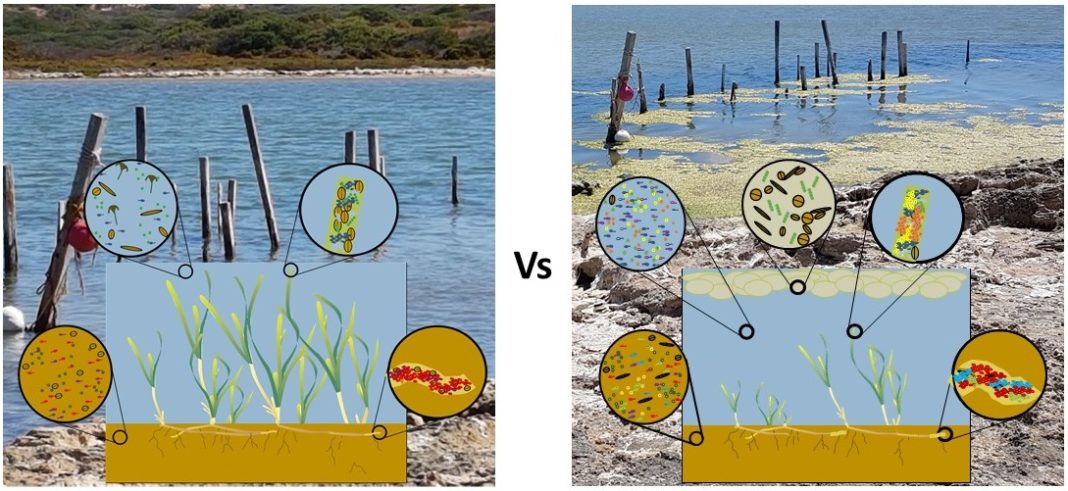Investigating the drivers and control of filamentous algae and restoration of aquatic plants in the Coorong
Ruppia tuberosa is a keystone species for the southern Coorong – contributing to maintaining water quality and trapping sediment while providing habitat for invertebrates and fish, and food for waterbirds. Excessive filamentous algal growth in the Coorong negatively impacts on Ruppia growth and seed production and dampens the long-term recovery of the Coorong ecosystem despite successful translocation efforts. There is no knowledge on the microbiota associated with Ruppia and their potential role in promoting filamentous algal growth. As microbial communities respond rapidly to environmental disturbance, monitoring their composition can provide indicators of environmental stress. We combine 16S and 18S rRNA genes sequencing of the environment (water and sediment) and of the seagrass microbiome (leaves and root) of Ruppia tuberosa with seagrass health metrics to develop microbial indicators for seagrass condition in the Coorong wetland.
Sophie Leterme has received $245,000 from the Goyder Institute as part of this project is led by Prof. Waycott (University of Adelaide), in collaboration with SARDI.
